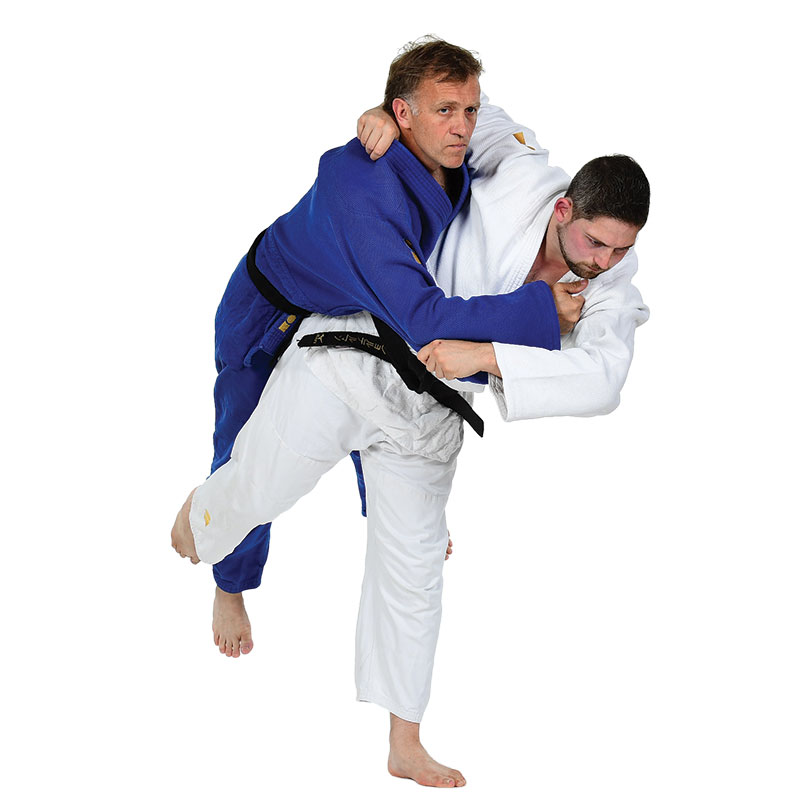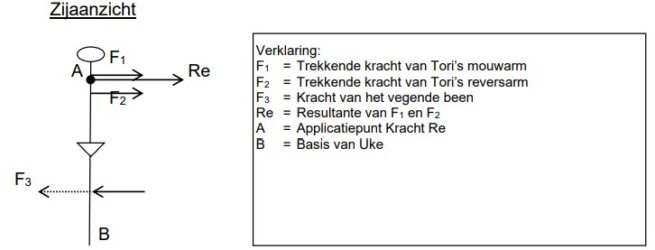Harai-goshi – 払腰 – Sweeping Hip Throw
Classification: Nage-waza (throwing technique) – Koshi-waza (hip technique)
Difficulty: ★★★★☆ (Advanced)
Kodokan-approved technique
Also featured in: Nage-no-Kata (as the follow-up to Uki-goshi)
Technical Description
Harai-goshi is a powerful sweeping hip throw in which tori breaks uke’s balance forward or to the front-right corner, rotates into position, pulls uke onto the hips, and sweeps uke’s right thigh with the back of tori’s right thigh in a sharp, coordinated motion.
Unlike Uki-goshi, where the throw is executed with minimal lifting and no sweeping, Harai-goshi employs a dynamic leg sweep in combination with upper body rotation, making it one of the most elegant and effective hip throws in judo.

Biomechanical Principles of Harai-goshi
Harai-goshi is executed using a couple of forces (Re + F3):
-
Re (Rotational force): Tori uses the arms to pull uke’s upper body forward and downward.
-
F3 (Sweeping force): Simultaneously, the back of tori’s sweeping leg contacts uke’s outer thigh just below the knee, disrupting uke’s support leg and sweeping it away.
Unlike a leverage-based throw (such as O-goshi), Harai-goshi removes uke’s base of support by combining torque and sweeping action. The result is a dynamic throw with high momentum and minimal resistance if executed correctly.

Did You Know?
-
Harai-goshi was “discovered” by accident.
According to judo legend, Jigoro Kano initially intended to perform Uki-goshi, his favourite throw. However, his opponent resisted by stiffening and pushing back. In response, Kano instinctively extended his leg, sweeping upward with the back of his thigh. The unplanned movement unbalanced uke and resulted in a successful throw. -
Recognising the value of this motion, Kano formalised the technique as Harai-goshi and included it immediately after Uki-goshi in the Nage-no-Kata, highlighting its role as a natural progression from the preceding technique.
Coaching Tip:
Focus on timing the leg sweep with your kuzushi (off-balancing). If you sweep too early or too high, uke may resist or fall awkwardly. Sweep just below the knee and allow your body to rotate naturally with the movement.